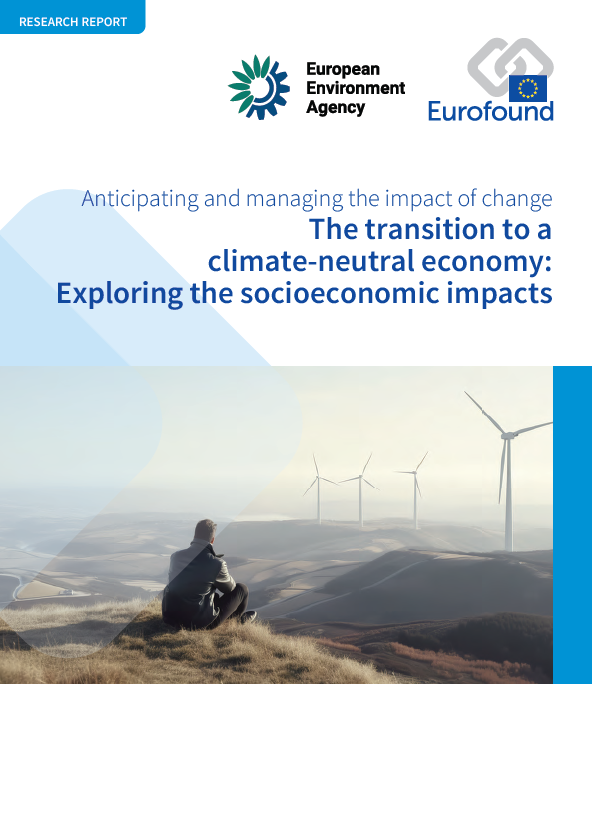
The EU’s transition to a climate-neutral economy requires nothing short of a clean industrial revolution. This report explores the potential socioeconomic implications of such fundamental change for different European regions and population groups, following a foresight approach. Scenario-focused engagement with stakeholders and experts was conducted to gain a better understanding of emerging economic and social inequalities at EU and regional levels. The research findings are presented together with policy pointers on developing measures to achieve a just transition that leaves no one behind.
Key findings
The move to a climate-neutral economy has the potential to create exciting new opportunities with net employment gains, new business sectors and a healthier environment.
Despite opportunities, the transition to a climate-neutral economy will however have disproportionate effects on certain regions and risks leaving groups behind, highlighting the urgent need for increased investment in education, (re)skilling, tailored support for job transitions and adequate social protection across the EU to ensure a successful and just transition.
Broad involvement of civil society, social partners and public authorities in the just transition has emerged as critical to securing and fairly distributing the returns from economic activity and resources as well as navigating conflicts. Institutionalising and strengthening mechanisms for engagement will be crucial and citizens need to receive reliable information to be involved with the decision-making processes, including through formal education.
Effective multilevel governance at EU, national and regional levels requires robust investment in capacity development and an integrated EU-wide evidence base drawing on social, economic and environmental data that includes regional and local levels. This is especially important for the long-term systemic change required to reorganise wider production-consumption systems as well as reconfiguring power relationships between the state, the corporate sector, trade unions and citizens.
The report contains the following lists of tables and figures.
List of tables
- Table 1: Overview of the scenarios of the transition by 2030
- Table 2: Characteristics of the European regional clusters
- Table 3: Overview of identified socioeconomic impacts on regions and population groups under Theme 1: Securing livelihoods, welfare and fairness
- Table 4: Overview of identified socioeconomic impacts on regions and population groups under Theme 2: Refocusing economic development
- Table 5: Overview of identified socioeconomic impacts on regions and population groups under Theme 3: Renewing infrastructure
- Table 6: Overview of identified socioeconomic impacts on regions and population groups under Theme 4: Enabling systemic change in European regions
- Table 7: Key factors and definitions
List of figures
- Figure 1: Key stages of research
- Figure 2: Visualisation of Scenario 1: All aboard the well-being transition
- Figure 3: Visualisation of Scenario 2: A piecemeal transition
- Figure 4: Visualisation of Scenario 3: A struggling transition
- Number of pages
-
58
- Reference nº
-
EF23021
- ISBN
-
978-92-897-2330-5
- Catalogue nº
-
TJ-04-23-531-EN-N
- DOI
-
10.2806/612740
- Permalink
Cite this publication
Eurofound and EEA (2023), The transition to a climate-neutral economy: Exploring the socioeconomic impacts, Publications Office of the European Union, Luxembourg.